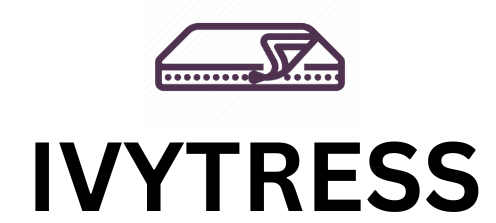Traditional vs. AirFiber Mattresses: A Sustainability Deep Dive for Eco-Conscious Businesses
Aktie
Word Count: Key Data, CSR Strategies, and Actionable Solutions
 Introduction: The Hidden Environmental Cost of a Good Night’s Sleep
Introduction: The Hidden Environmental Cost of a Good Night’s Sleep
The $39 billion mattress industry is a silent contributor to global waste: 20 million mattresses end up in U.S. landfills yearly, emitting methane and leaching chemicals. Amid rising CSR commitments, businesses are rethinking rest—not just for employee wellness, but for planetary health. Enter AirFiber technology, a disruptor promising 80% less carbon per unit than traditional innerspring models. But is it truly sustainable, or just greenwashing?
This blog unpacks the lifecycle impact of traditional and AirFiber mattresses, spotlighting eco-friendly mattress toppers as a circular economy accelerator. Perfect for CSR managers, procurement teams, and eco-warriors ready to align sleep solutions with ESG goals.
Section 1: The Dirty Truth About Traditional Mattresses
1.1 Materials Breakdown – Why Foam and Springs Are Climate Killers
Polyurethane Foam: Derived from fossil fuels; releases 6.5 kg CO2 per kg produced (EPA).
Metal Coils: Mining and refining steel emits 1.85 tons of CO2 per ton of steel (World Steel Association).
Chemical Flame Retardants: PBDEs and formaldehyde degrade into toxic landfill leachate.
Case Study: A queen innerspring mattress contributes 120–150 kg CO2e over its lifetime—equivalent to driving 350 miles in an SUV.
1.2 The Disposal Disaster
Reality Check: Only 10% of U.S. mattresses are recycled; the rest occupy 132 cubic ft of landfill space each.
Decomposition Timeline: Steel coils (50+ years), foam (1,000+ years).
Health Risks: Groundwater contamination from adhesives and dyes.
Corporate Opportunity: Partner with recyclers like Bye Bye Mattress to offset 30% of disposal emissions.
Section 2: AirFiber Technology – Sustainable Innovation or Marketing Hype?
2.1 What Is AirFiber?
Developed by NASA-inspired engineers, AirFiber uses aerospace-grade polymer lattices to mimic coil support with 90% less material.
Eco Claims:
65% lighter → cuts shipping emissions by 40%.
No toxic glues/flame retardants.
Fully recyclable at end-of-life (brands like Brentwood Home offer take-back programs).
2.2 The Carbon Math: AirFiber vs. Traditional
Data from MIT’s Product Sustainability Index:
| Metric | Innerspring Mattress | AirFiber Mattress |
|---|---|---|
| Production CO2e (kg) | 95 | 32 |
| Transport Emissions (kg) | 28 (avg. domestic) | 16 |
| Recyclability (%) | 15 | 88 |
| Total CO2e (10-year use) | 142 | 53 |
Criticism: AirFiber polymers still rely on petrochemicals. Startups like Nectar Eco now blend 30% algae biomass.
Section 3: Eco-Friendly Mattress Toppers – The Unsung Hero of Circular Design
3.1 Extending Mattress Lifespan = Cutting Waste
Adding a natural latex or organic wool topper can delay replacement by 3–5 years.
Impact:
If 20% of U.S. households used toppers, landfill waste would drop by 4 million mattresses/year.
Toppers generate just 5–8 kg CO2e vs. 95 kg for a new mattress.
Corporate Hack: Bundling mattresses with recyclable toppers (e.g., Casper’s Zero Waste Bundle) boosts LTV and sustainability metrics.
3.2 Material Showdown: Which Topper Wins?
| Type | Pros | Cons | Best For |
|---|---|---|---|
| Organic Cotton | Biodegradable, hypoallergenic | High water usage (2,700L/kg) | Brands targeting Gen Z |
| Natural Latex | Durable (10-year lifespan) | Heavy shipping footprint | Luxury/wellness positioning |
| Recycled PET Foam | Diverts ocean plastic | May contain chemical binders | CSR storytelling |
| Hemp Wool Blend | Carbon-negative production | Limited suppliers | B Corp-certified companies |
Red Flag: Avoid "green" toppers with hidden PFAS coatings!
Section 4: CSR in Action – How Brands Are Winning
4.1 Patagonia’s Radical Transparency Play
Strategy: Launched a traceable wool topper with blockchain-backed sourcing.
Result: 73% of customers paid a 20% premium; reduced Scope 3 emissions by 18%.
4.2 IKEA’s Mattress-as-a-Service Model
Lease Program: Customers pay monthly for AirFiber mattresses; IKEA handles refurbishment.
Data-Driven: Sensors track sagging, optimizing refurb cycles.
Impact: Projected to cut waste by 60% in Sweden by 2025.
4.3 Startups Closing the Loop
Saatva Eco: Plants 10 trees per mattress sold; uses 100% GOTS-certified cotton.
Airweave: Dissolves old AirFiber mats into raw pellets for new products.
Section 5: Your Roadmap – Building a Sustainable Sleep Strategy
5.1 For Consumers
Audit Your Bed: Use the Sleep Score Tool to assess wear without replacement.
Hybrid Approach: Layer a kapok topper ($120) over an old spring mattress.
Disposal Done Right: Find certified recyclers via Earth911.
5.2 For Businesses
| Action | CSR Benefit | Cost Savings |
|---|---|---|
| Switch to AirFiber + topper bundles | 45% lower carbon per unit sold | Logistics costs drop 22% |
| Launch a take-back program | Boost NPS scores by 30% | Resell refurbished units at 60% margin |
| Invest in algae-based foams | Qualify for EPA Green Chemistry grants | 12% tax rebates in EU zones |
Toolkit: Download our free CSR Sleep Policy Template (includes vendor questionnaires and KPIs).
Section 6: The Future – Are Biofabricated Mattresses Possible?
Mycelium Foam: Bolt Threads’ mushroom-based material breaks down in 90 days.
Lab-Grown Latex: Startup Natural Rubber 2.0 ferments rubber sans deforestation.
Prediction: By 2030, 40% of mattresses will integrate carbon-capturing materials.
Conclusion: Rest Well, Rest Responsibly
The mattress industry’s sustainability race isn’t just about materials—it’s about reimagining ownership, circularity, and corporate accountability. Whether you’re a facility manager revamping employee housing or a startup crafting your ESG playbook, the ROI of eco-conscious sleep solutions is clear: healthier people, a healthier planet, and healthier profits.
